there are many techniques not only the model
- Increase the size of data, which also creates significant inputs.
- Use features extraction functions and preprocessing of data, MFCC, Furriers, and Data input transforming ( blur, rotates, flipped, paddings, zooms, or random noises ).
- Create multiple sets of data inputs and training K-folded validation.
- Random data selection, saved and load model or performance callbacks parameter adjusting.
- Compares between models or model concatenated.
Sample: My image recognitions templates, useful when performing functions and conversations for solutions.
import os
from os.path import exists
import tensorflow as tf
import tensorflow_io as tfio
import pandas as pd
import matplotlib.pyplot as plt
"""""""""""""""""""""""""""""""""""""""""""""""""""""""""
[PhysicalDevice(name='/physical_device:GPU:0', device_type='GPU')]
None
"""""""""""""""""""""""""""""""""""""""""""""""""""""""""
physical_devices = tf.config.experimental.list_physical_devices('GPU')
assert len(physical_devices) > 0, "Not enough GPU hardware devices available"
config = tf.config.experimental.set_memory_growth(physical_devices[0], True)
print(physical_devices)
print(config)
"""""""""""""""""""""""""""""""""""""""""""""""""""""""""
: Variables
"""""""""""""""""""""""""""""""""""""""""""""""""""""""""
variables = pd.read_excel('F:\\temp\\Python\\excel\\Book 13 (2) (3).xlsx', index_col=None, header=[0])
list_label = [ ]
list_Image = [ ]
list_file_actual = [ ]
list_label_actual = [ 'Candidt Kibt', 'Candidt Kibt', 'Candidt Kibt', 'Candidt Kibt', 'Candidt Kibt', 'Pikaploy', 'Pikaploy', 'Pikaploy', 'Pikaploy', 'Pikaploy' ]
for Index, Image, Label in variables.values:
print( Label )
# list_label.append( Label )
image = tf.io.read_file( Image )
image = tf.io.decode_image(image)
list_file_actual.append(image)
image = tf.image.resize(image, [32,32], method='nearest')
list_Image.append(image)
if Label == 0:
list_label.append(0)
else:
list_label.append(9)
# if Label == 0:
# list_label_actual.append('Candidt Kibt')
# else:
# list_label_actual.append('Pikaploy')
list_label = tf.cast( list_label, dtype=tf.int32 )
list_label = tf.constant( list_label, shape=( 54, 1, 1 ) )
list_Image = tf.cast( list_Image, dtype=tf.int32 )
list_Image = tf.constant( list_Image, shape=( 54, 1, 32, 32, 3 ) )
# print( list_label_actual )
# print( list_label )
checkpoint_path = "F:\\models\\checkpoint\\" + os.path.basename(__file__).split('.')[0] + "\\TF_DataSets_01.h5"
checkpoint_dir = os.path.dirname(checkpoint_path)
loggings = "F:\\models\\checkpoint\\" + os.path.basename(__file__).split('.')[0] + "\\loggings.log"
if not exists(checkpoint_dir) :
os.mkdir(checkpoint_dir)
print("Create directory: " + checkpoint_dir)
log_dir = checkpoint_dir
"""""""""""""""""""""""""""""""""""""""""""""""""""""""""
: DataSet
"""""""""""""""""""""""""""""""""""""""""""""""""""""""""
dataset = tf.data.Dataset.from_tensor_slices(( list_Image, list_label ))
list_Image = tf.constant( list_Image, shape=( 54, 32, 32, 3) ).numpy()
print( "===========================================" )
print( "type of variables: " )
print( type(variables) )
print( variables )
print( "variables.values: " )
print( variables.values )
"""""""""""""""""""""""""""""""""""""""""""""""""""""""""
: Model Initialize
"""""""""""""""""""""""""""""""""""""""""""""""""""""""""
model = tf.keras.models.Sequential([
tf.keras.layers.InputLayer(input_shape=( 32, 32, 3 )),
tf.keras.layers.Normalization(mean=3., variance=2.),
tf.keras.layers.Normalization(mean=4., variance=6.),
tf.keras.layers.Conv2D(32, (3, 3), activation='relu'),
tf.keras.layers.MaxPooling2D((2, 2)),
tf.keras.layers.Dense(512, activation='relu'),
tf.keras.layers.Dropout(0.3),
tf.keras.layers.Reshape((512, 225)),
tf.keras.layers.Bidirectional(tf.keras.layers.LSTM(96, return_sequences=True, return_state=False)),
tf.keras.layers.Bidirectional(tf.keras.layers.LSTM(96)),
tf.keras.layers.Flatten(),
tf.keras.layers.Dense(192, activation='relu'),
tf.keras.layers.Dense(10),
])
"""""""""""""""""""""""""""""""""""""""""""""""""""""""""
: FileWriter
"""""""""""""""""""""""""""""""""""""""""""""""""""""""""
if exists(checkpoint_path) :
model.load_weights(checkpoint_path)
print("model load: " + checkpoint_path)
input("Press Any Key!")
"""""""""""""""""""""""""""""""""""""""""""""""""""""""""
: Callback
"""""""""""""""""""""""""""""""""""""""""""""""""""""""""
class custom_callback(tf.keras.callbacks.Callback):
def on_epoch_end(self, epoch, logs={}):
if( logs['accuracy'] >= 0.97 ):
self.model.stop_training = True
custom_callback = custom_callback()
"""""""""""""""""""""""""""""""""""""""""""""""""""""""""
: Optimizer
"""""""""""""""""""""""""""""""""""""""""""""""""""""""""
optimizer = tf.keras.optimizers.Nadam(
learning_rate=0.000001, beta_1=0.9, beta_2=0.999, epsilon=1e-07,
name='Nadam'
)
"""""""""""""""""""""""""""""""""""""""""""""""""""""""""
: Loss Fn
"""""""""""""""""""""""""""""""""""""""""""""""""""""""""
lossfn = tf.keras.losses.SparseCategoricalCrossentropy(
from_logits=False,
reduction=tf.keras.losses.Reduction.AUTO,
name='sparse_categorical_crossentropy'
)
"""""""""""""""""""""""""""""""""""""""""""""""""""""""""
: Model Summary
"""""""""""""""""""""""""""""""""""""""""""""""""""""""""
model.compile(optimizer=optimizer, loss=lossfn, metrics=['accuracy'] )
model.save_weights(checkpoint_path)
"""""""""""""""""""""""""""""""""""""""""""""""""""""""""
: Training
"""""""""""""""""""""""""""""""""""""""""""""""""""""""""
history = model.fit( dataset, batch_size=120, epochs=10000, callbacks=[custom_callback] )
plt.figure(figsize=(6, 6))
plt.title("Actors recognitions")
for i in range(30):
img = tf.keras.preprocessing.image.array_to_img(
list_Image[i],
data_format=None,
scale=True
)
img_array = tf.keras.preprocessing.image.img_to_array(img)
img_array = tf.expand_dims(img_array, 0)
predictions = model.predict(img_array)
score = tf.nn.softmax(predictions[0])
plt.subplot(6, 6, i + 1)
plt.xticks([])
plt.yticks([])
plt.grid(False)
plt.imshow(list_file_actual[i])
plt.xlabel(str(round(score[tf.math.argmax(score).numpy()].numpy(), 2)) + ":" + str(list_label_actual[tf.math.argmax(score)]))
plt.show()
input('...')
Output: They are actually Thailand actors, broadcasts collected from the Internet.
Sample


